April 1-5, 2013 - Moscone West Convention Hall and San Francisco Marriott Marquis, San Francisco
Starting with just four symposia in 1983, the MRS Spring Meeting and Exhibit has grown to over 50 symposia and over 5,000 attendees. Held annually in San Francisco’s Moscone West convention hall and the San Francisco Marriott Marquis, MRS Spring Meetings are essential events for discovering and presenting the very latest developments in materials research.
April 1-5, 2013 was a great week for the team from Drexel NanoMaterials Group, chaired by professor Yury Gogotsi, Ph.D., D.Sc. Distinguished University Professor and Trustee Chair Director, A.J. Drexel Nanotechnology Institute, Drexel University, USA. Drexel NanoMaterials Group work was featured in the MRS Daily News, also Drexel team took part in Poster Session.
The 2013 MRS Spring Meeting hosted 56 technical sessions, an international exhibit, a variety of special events and tutorial sessions, and much more. Fifty-six (56) symposia will comprise the technical core of the meeting. The symposia are grouped into the following clusters:
Electronics and Photonics: These symposia focused on electronic and photonic materials, devices, and processing. In addition, the areas of organic electronics, and Si photonics for interconnects, sensing, and imaging will also be covered.
Materials Science and Materials Chemistry for Energy: Topics including photovoltaics, energy conversion and storage, materials science for sustainability, artificial photosynthesis, thermoelectrics, and energy materials in-situ characterization methods will be discussed.
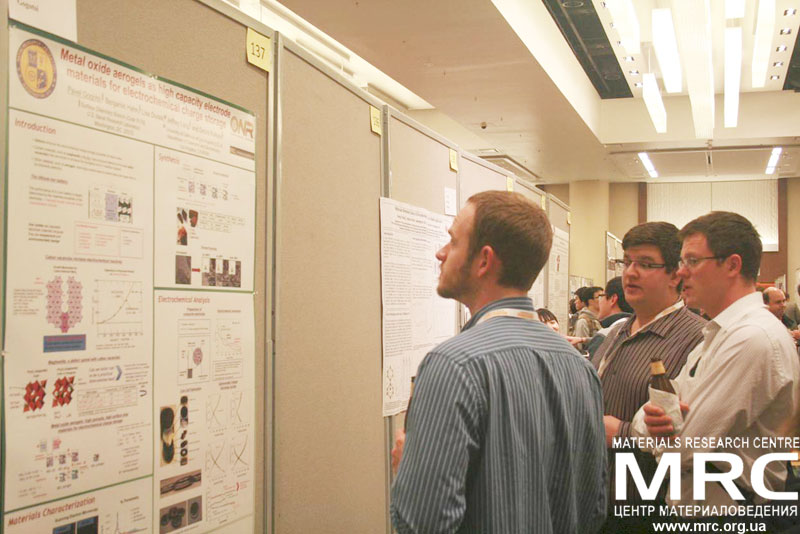 Nanostructured Materials and Devices: This cluster contained sessions on the synthesis and characterization of nanomaterials with additional symposia devoted to new trends in 2-dimensional nanomaterials, ultra-small clusters, piezotronic nanostructures, and metal oxides.
Nanostructured Materials and Devices: This cluster contained sessions on the synthesis and characterization of nanomaterials with additional symposia devoted to new trends in 2-dimensional nanomaterials, ultra-small clusters, piezotronic nanostructures, and metal oxides.
Biological, Biomedical, and Bio-inspired Materials: These symposia covered a wide range of topics including bioelectronics, organic and inorganic materials, bionanotechnology, and multi-functional materials.
Several symposia explore the critical issues involved in interfacing biological systems with synthetic materials for regeneration, imaging, cancer therapies, and sensing. Other areas covered include cell instructive materials, cellular micro-environments and the immune response, and the functionalization of organic and inorganic materials.
General Materials Science: This cluster rounded out the meeting with symposia on oxide and superconducting materials, ionic liquids, materials characterization, plasma and ion-beam processing, carbon interfaces, nuclear radiation detection, reversible phase transformations, extreme environments, and materials science education.
Symposium X: Frontiers of Materials Research featured presentations aimed at a broad audience and on topics at the forefront of research on materials science and engineering.
Best Poster Awards
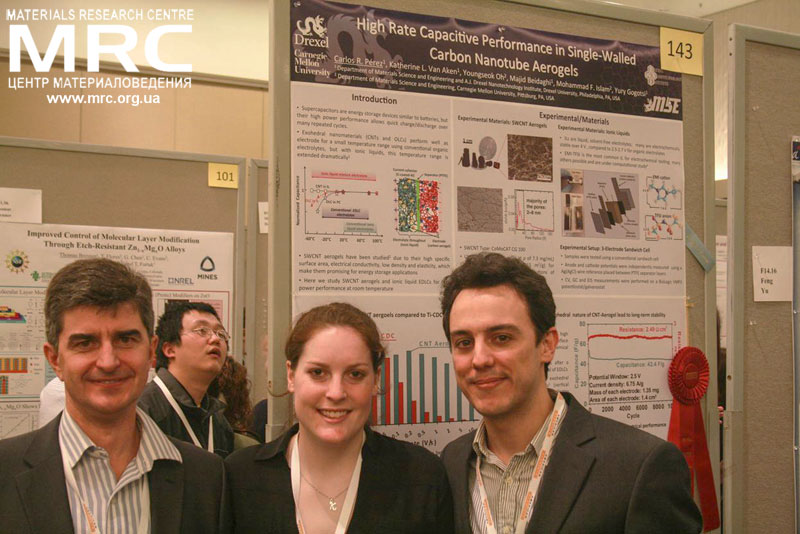
Poster sessions are an important and integral part of MRS meetings, allowing many more authors the opportunity to share their research and ideas with others. Because the quality of the poster sessions is a major priority of the Society, the 2013 Spring Meeting Chairs recognized the best presentations at each of the sessions. The Meeting Chairs will select the winners on the basis of the poster's technical content, appearance, graphic excellence, and presentation quality.
The poster presentation High Rate Capacitive Performance in Single Walled Carbon Nanotube Aerogels produced by Carlos R. Perez, Katie van Aken and Majid Beidaghi won the prestigious Best Poster Award.
Student-Organized Energy Materials Forum, April 1, 2013
Energy issues are at the forefront due to increasing energy needs, concerns over climate change and the decline of fossil-fuel resources. A combination of new strategies and materials will be required to meet the growing need for sustainable energy production. Because energy-related research stretches across diverse fields and institutions, this forum helped to bring together researchers in energy-related fields. This forum:
- Highlighted challenges with current materials and devices in energy applications and the design of novel materials for future energy harvesting and storage
- Addressed careers in alternative energy, policies and markets
- Provided both an academic and industrial perspective of the current state of energy needs
- Offered insights into various energy fields including solar, water, biomass conversion, geothermal and wind energy
- Facilitated networking between students and researchers to help generate new collaborations
Experts in energy issues from academia, industry and national laboratories gave presentations and engaged in discussions regarding the current energy market and potential technologies on the horizon. A networking poster session with presentations by approximately 50 graduate students engaged in the field of alternative energy was included. This was an excellent way for the participants to exchange ideas, interact with peers and seek potential collaboration opportunities. As invited speaker professor Yury Gogotsi, Ph.D., D.Sc. Distinguished University Professor and Trustee Chair Director, A.J. Drexel Nanotechnology Institute, Drexel University, USA, gave a lecture on Carbon Materials for Electrochemical Capacitors, Challenges and Opportunities.
Symposium E: Materials and Integration Challenges for Energy Generation and Storage in Mobile Electronic Devices
At that Simposium professor Yury Gogotsi presented new publication of Drexel NanoMaterials Group:
Wearable Textile-based Supercapacitors
Yury Gogotsi1, Kristy Jost1, Daniel Stenger1, Carlos R. Perez1, John K. McDonough1, Genevieve Dion1.
1, Department of Materials Science and Engineering, Drexel University, Philadelphia, Pennsylvania, USA.
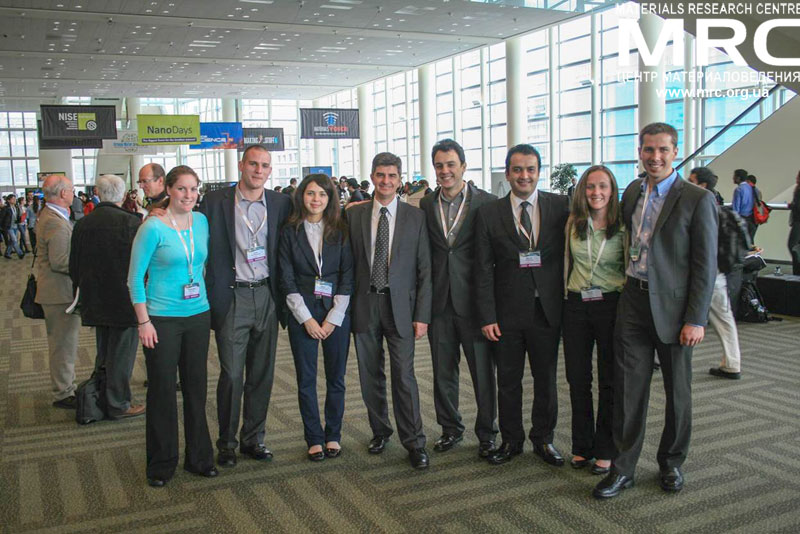
Portable electronic devices require energy sources that are highly sophisticated, inexpensive, lightweight, and flexible mobile systems so that they can be integrated onto plastic, textile, or paper platforms. Toward this end, there has been tremendous interest in flexible energy generation, storage, and conversion devices. However the performance of these devices has created a power gap between what energy elements can provide and what systems demand. As the performance of individual energy devices continues to increase, integration issues, generating and accessing the energy, and adaption into lightweight flexible systems are some of the critical issues that must be resolved if wearable and efficient mobile energy devices are to be realized. Thus, energy for mobile systems requires a shift in the way they are viewed and addresses a number of technical challenges that must be overcome in integrating energy devices.
This symposium is intended to provide a forum for scientists and engineers working in the energy and related fields to exchange ideas on novel energy generation, conversion, and storage, and integration techniques, including viable manufacturing technologies. Abstracts are invited on both fundamental and applied aspects of advanced flexible and inexpensive solar cells, electrochemical power source including batteries and supercapacitors, in relation to materials synthesis and characterization, devices, and evaluation, and integration and testing with reference to mobile and flexible electronics applications.
- Flexible batteries, supercapacitors, solar cells
- Low-power oxide and graphene devices for flexible, wearable electronics
- Low-temperature processes for electronics on plastic, textile, or paper substrates;
integration of batteries, solar cells, or other power sources with printed electronics - Proximity and wireless charging of batteries
- Optimal energy storage and retrieval, and associated thin-film power electronics
RELATED ITEMS:


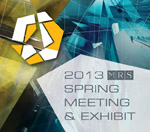

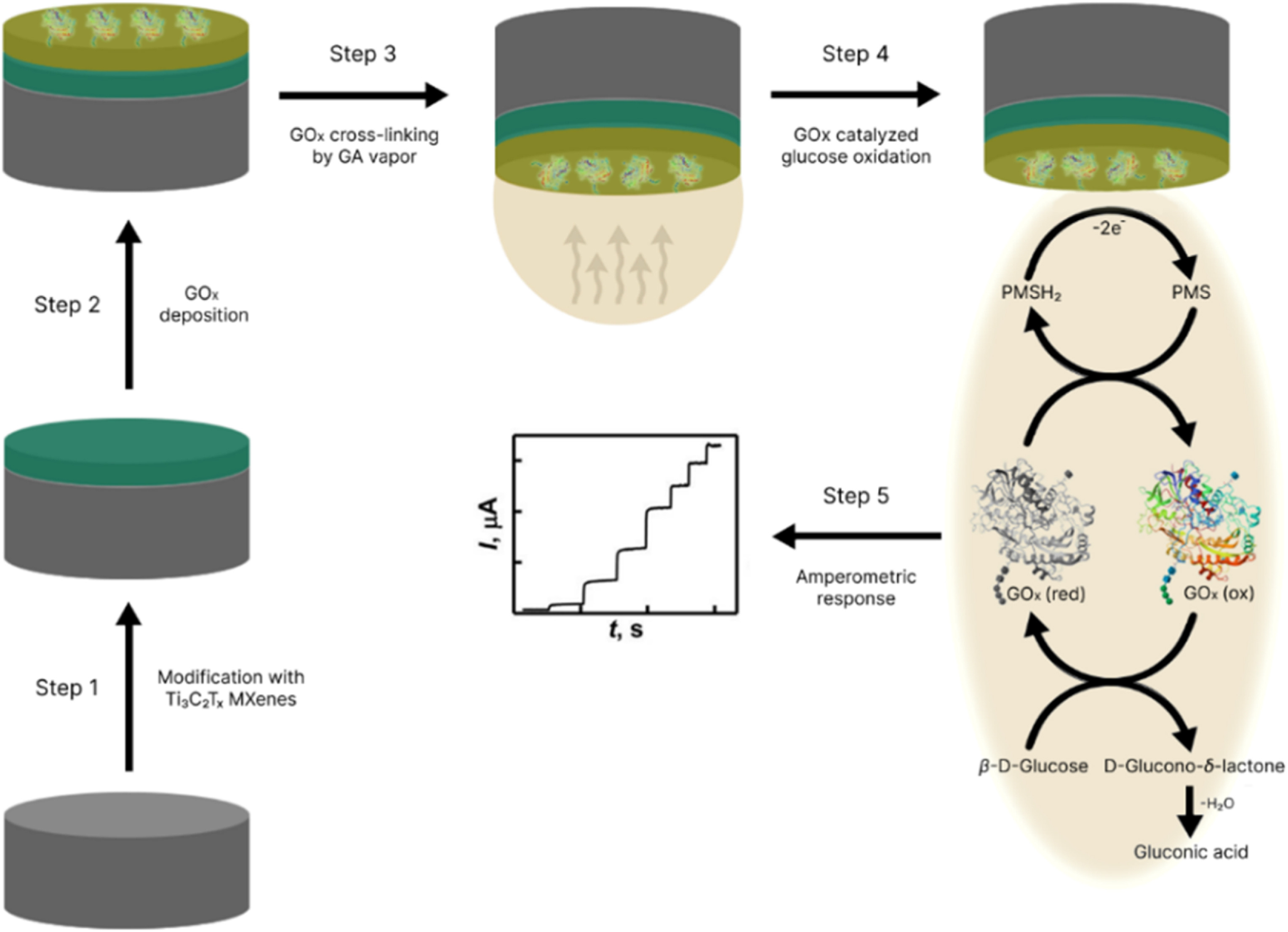
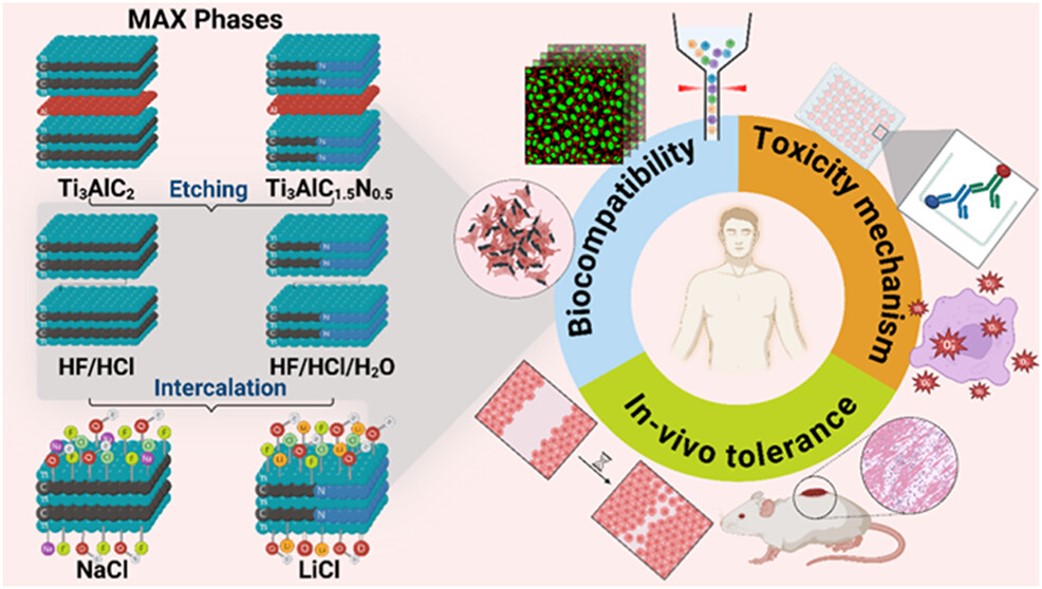 MXenes potential applications include sensors, wound healing materials, and drug delivery systems. A recent study explored how different synthesis methods affect the safety and performance of MXenes. By comparing etching conditions and intercalation strategies, researchers discovered that fine-tuning the surface chemistry of MXenes plays a crucial role in improving biocompatibility. These results provide practical guidelines for developing safer MXenes and bring the field one step closer to real biomedical applications.
MXenes potential applications include sensors, wound healing materials, and drug delivery systems. A recent study explored how different synthesis methods affect the safety and performance of MXenes. By comparing etching conditions and intercalation strategies, researchers discovered that fine-tuning the surface chemistry of MXenes plays a crucial role in improving biocompatibility. These results provide practical guidelines for developing safer MXenes and bring the field one step closer to real biomedical applications.
 Exellent news, our joint patent application with Drexel University on highly porous MAX phase precursor for MXene synthesis published. Congratulations and thanks to all team involved!
Exellent news, our joint patent application with Drexel University on highly porous MAX phase precursor for MXene synthesis published. Congratulations and thanks to all team involved!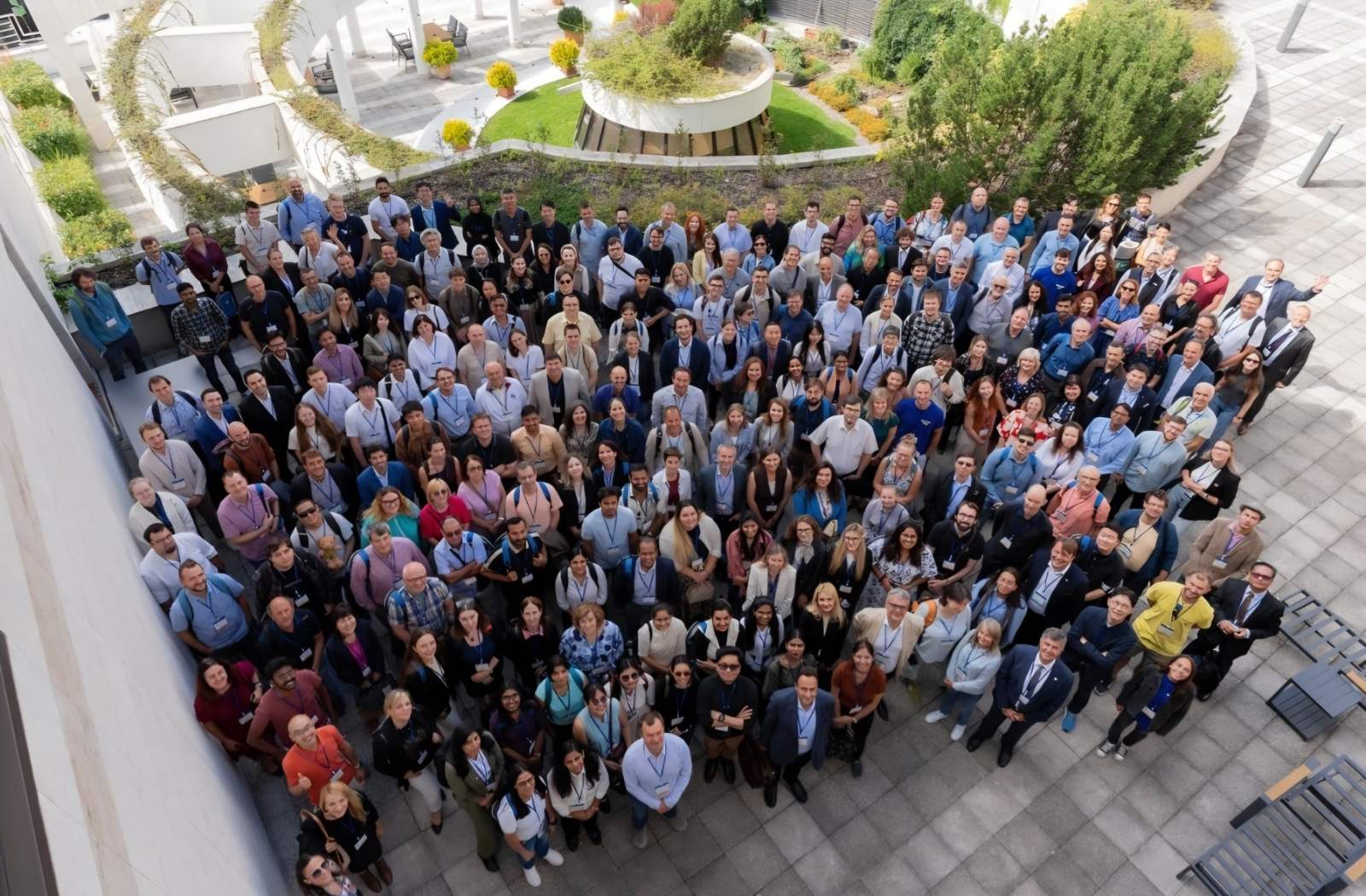 Our team was very delighted to take part in International Symposium "The MXene Frontier: Transformative Nanomaterials Shaping the Future" – the largest MXene event in Europe this year!
Our team was very delighted to take part in International Symposium "The MXene Frontier: Transformative Nanomaterials Shaping the Future" – the largest MXene event in Europe this year!  Last Call! Have you submitted your abstract for IEEE NAP-2025 yet? Join us at the International Symposium on "The MXene Frontier: Transformative Nanomaterials Shaping the Future" – the largest MXene-focused conference in Europe this year! Final Submission Deadline: May 15, 2025. Don’t miss this exclusive opportunity to showcase your research and engage with world leaders in the MXene field!
Last Call! Have you submitted your abstract for IEEE NAP-2025 yet? Join us at the International Symposium on "The MXene Frontier: Transformative Nanomaterials Shaping the Future" – the largest MXene-focused conference in Europe this year! Final Submission Deadline: May 15, 2025. Don’t miss this exclusive opportunity to showcase your research and engage with world leaders in the MXene field!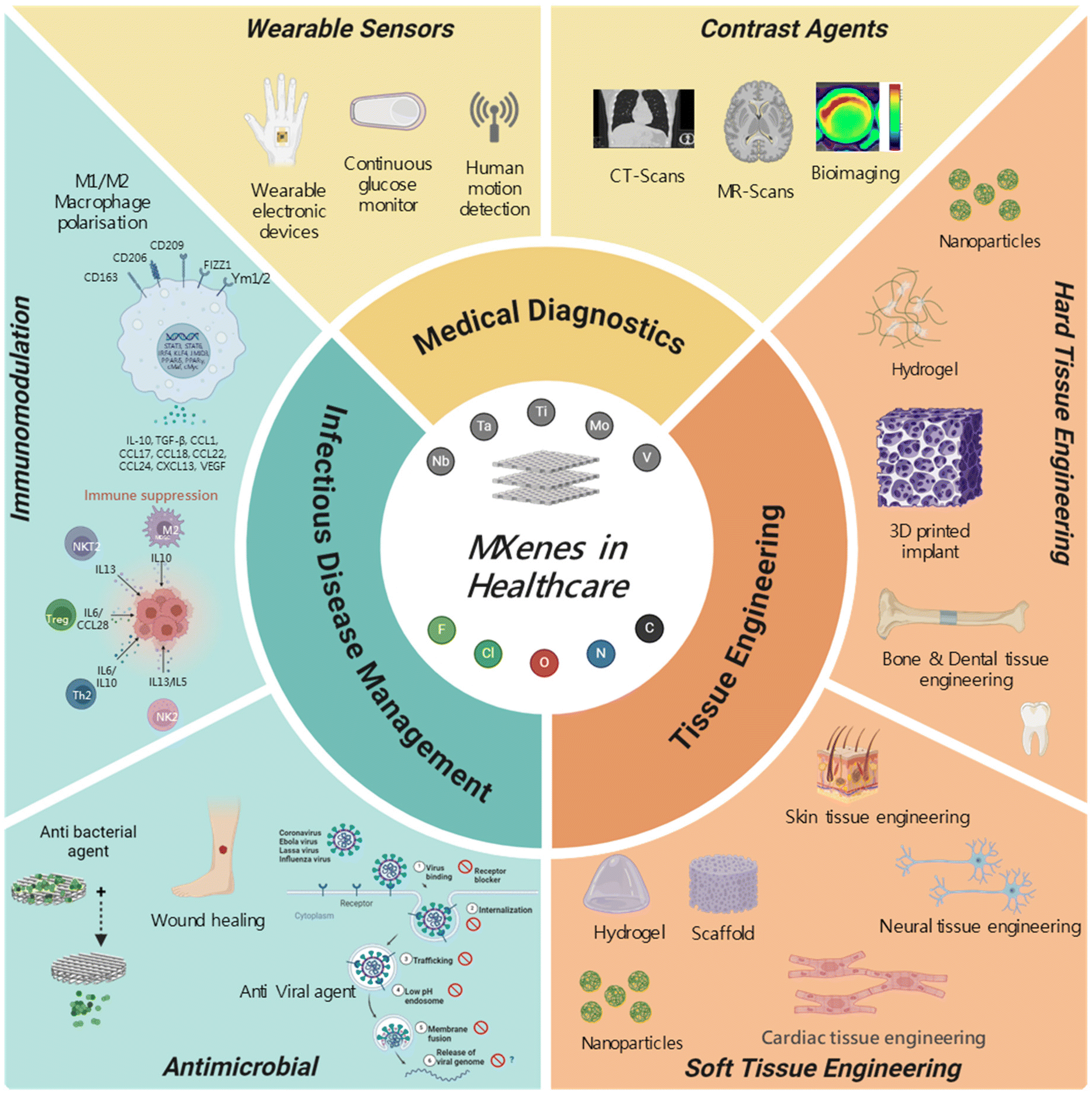 We are excited to announce the publication of latest review article on MXenes in Healthcare. This comprehensive review explores the groundbreaking role of MXenes—an emerging class of 2D materials—in revolutionizing the fields of medical diagnostics and therapeutics. Read the full article here: https://doi.org/10.1039/D4NR04853A.
We are excited to announce the publication of latest review article on MXenes in Healthcare. This comprehensive review explores the groundbreaking role of MXenes—an emerging class of 2D materials—in revolutionizing the fields of medical diagnostics and therapeutics. Read the full article here: https://doi.org/10.1039/D4NR04853A.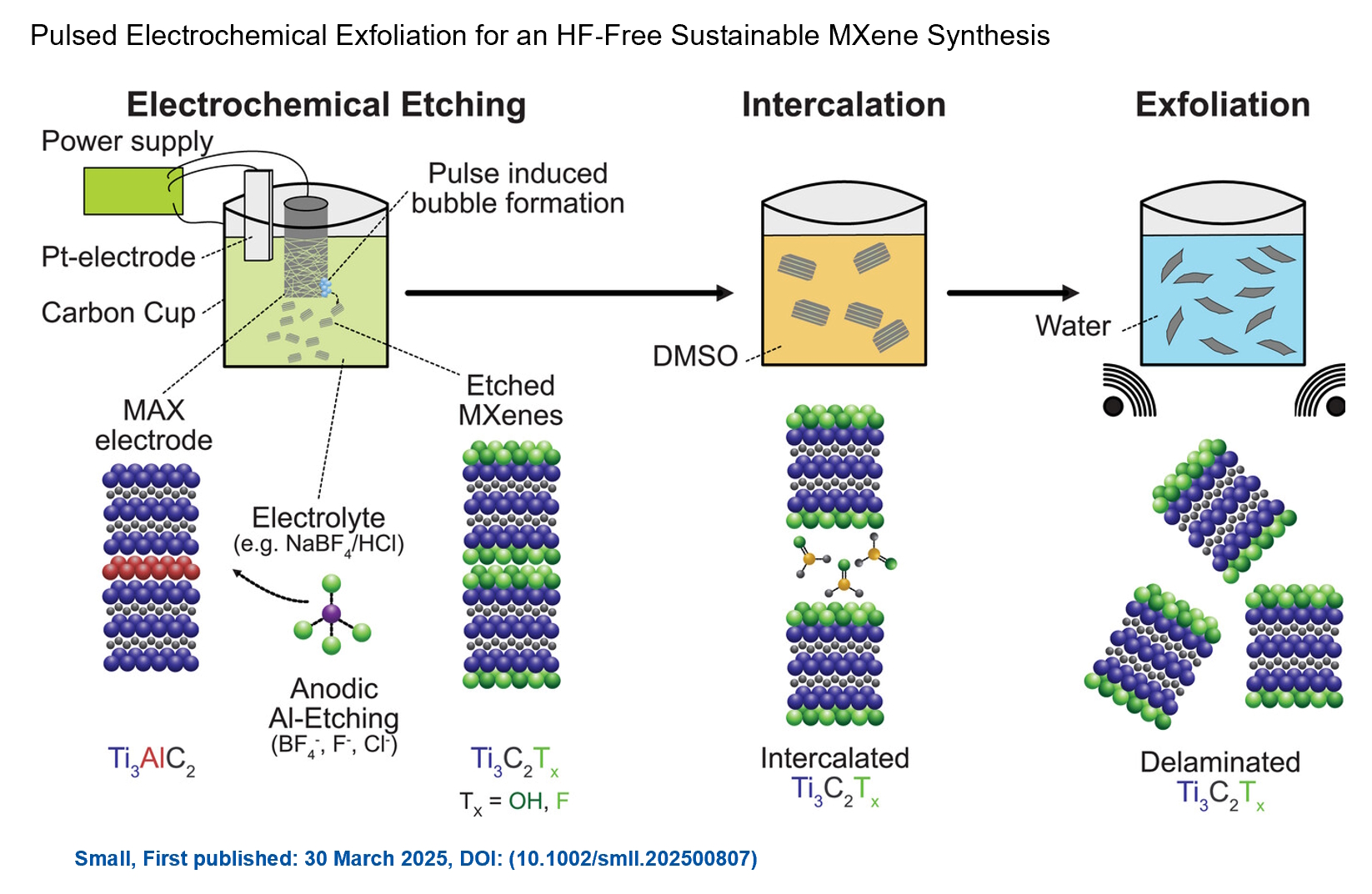 Congratulations and thank you to our collaborators from TU Wien and CEST for very interesting work and making it published! In this work, an upscalable electrochemical MXene synthesis is presented. Yields of up to 60% electrochemical MXene (EC-MXene) with no byproducts from a single exfoliation cycle are achieved.
Congratulations and thank you to our collaborators from TU Wien and CEST for very interesting work and making it published! In this work, an upscalable electrochemical MXene synthesis is presented. Yields of up to 60% electrochemical MXene (EC-MXene) with no byproducts from a single exfoliation cycle are achieved. Congratulations to all collaborators with this interesting joint work!
Congratulations to all collaborators with this interesting joint work!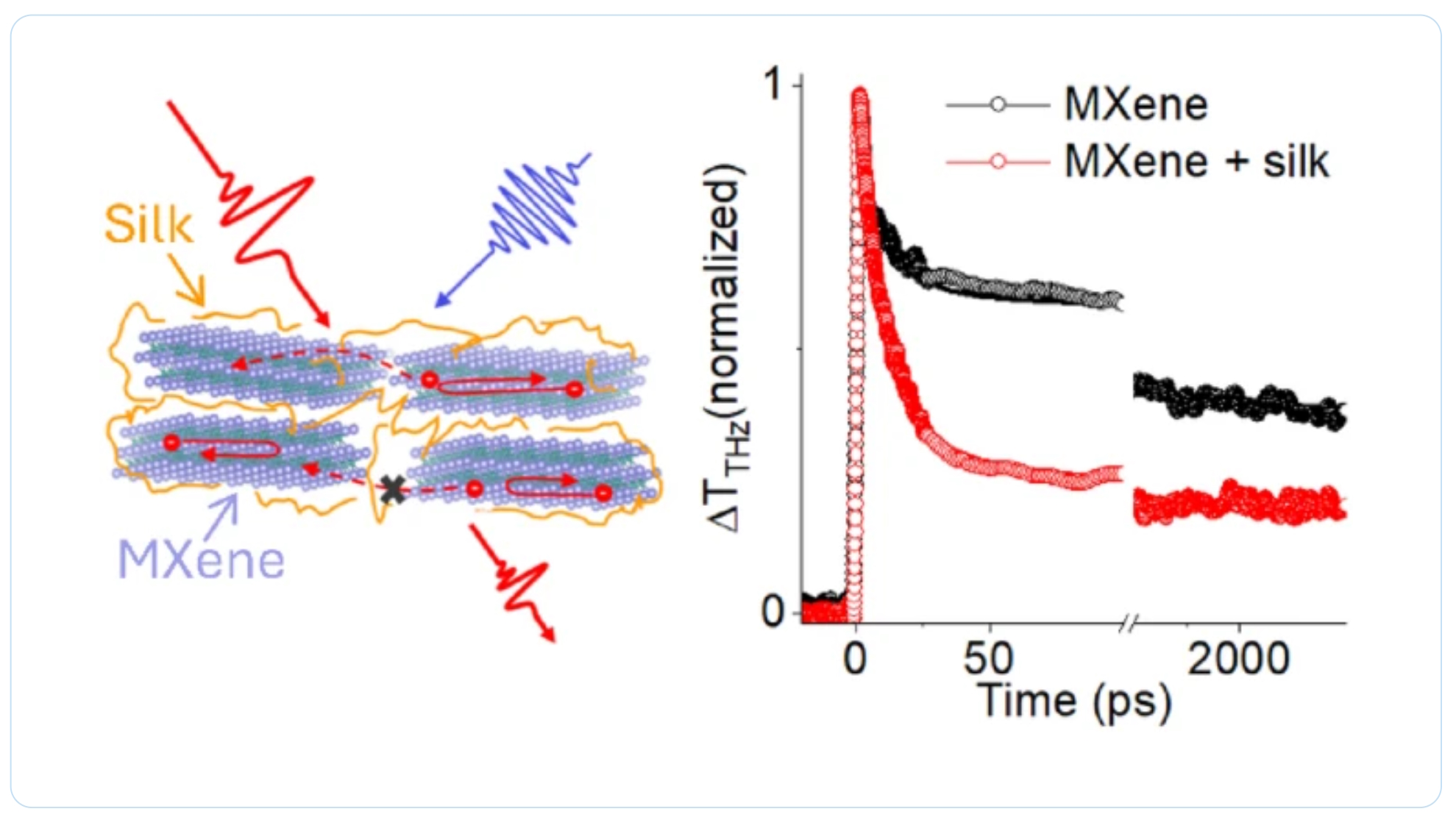 Thank you to our collaborators for the amazing joint work recently published in Graphene and 2D Nanomaterials about MXene–silk fibroin composite films aiming to develop materials with tunable electronic and thermal properties
Thank you to our collaborators for the amazing joint work recently published in Graphene and 2D Nanomaterials about MXene–silk fibroin composite films aiming to develop materials with tunable electronic and thermal properties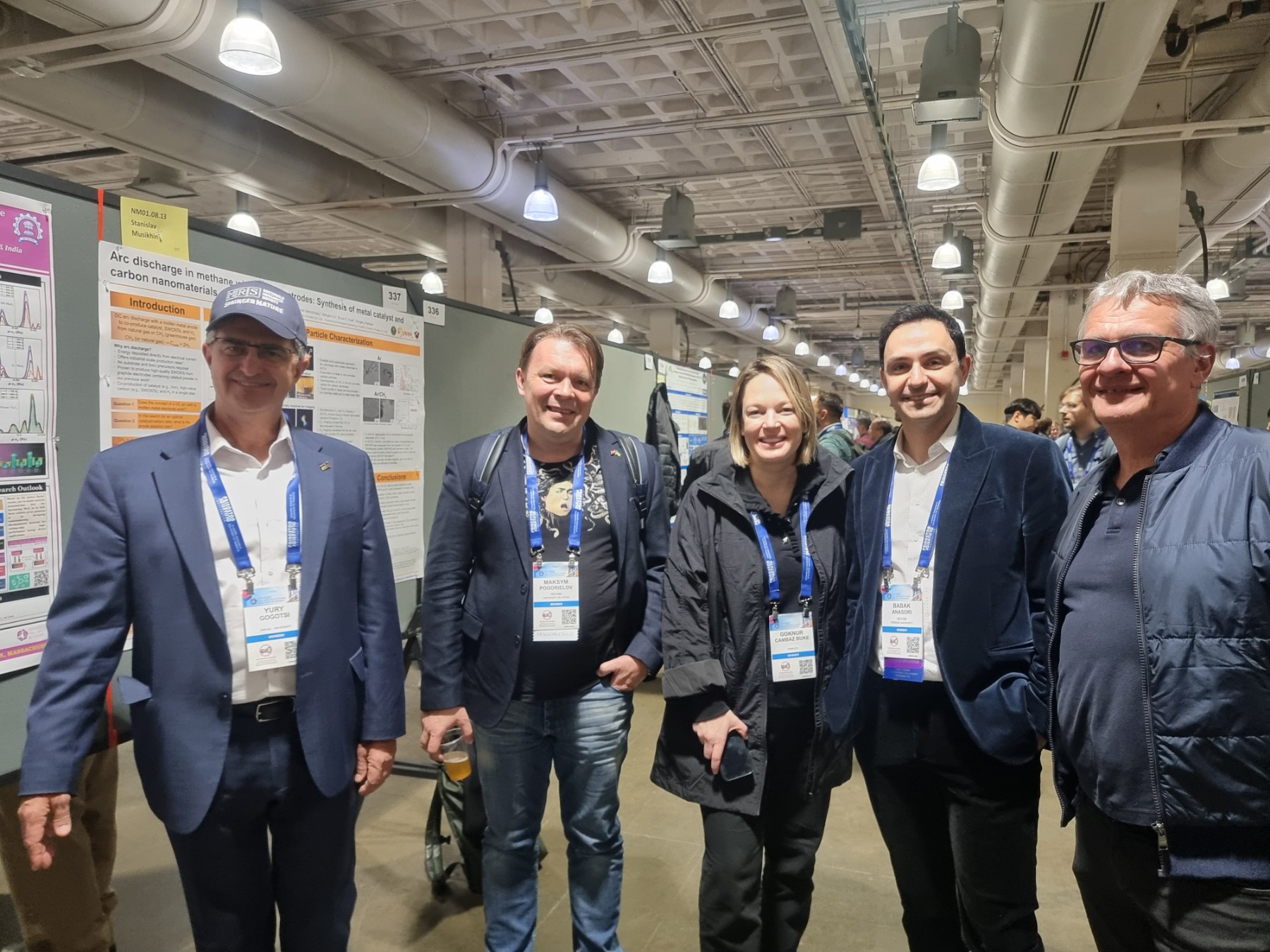 Dr. Oleksiy Gogotsi, director of MRC and Carbon-Ukraine, innovative companies that are among the leaders on the world MXene market, visited 2024 MRS Fall Meeting & Exhibit. together with Dr. Maksym Pogorielov, Head of Advanced Biomaterials and Biophysics Laboratory, University of Latvia.
Dr. Oleksiy Gogotsi, director of MRC and Carbon-Ukraine, innovative companies that are among the leaders on the world MXene market, visited 2024 MRS Fall Meeting & Exhibit. together with Dr. Maksym Pogorielov, Head of Advanced Biomaterials and Biophysics Laboratory, University of Latvia.
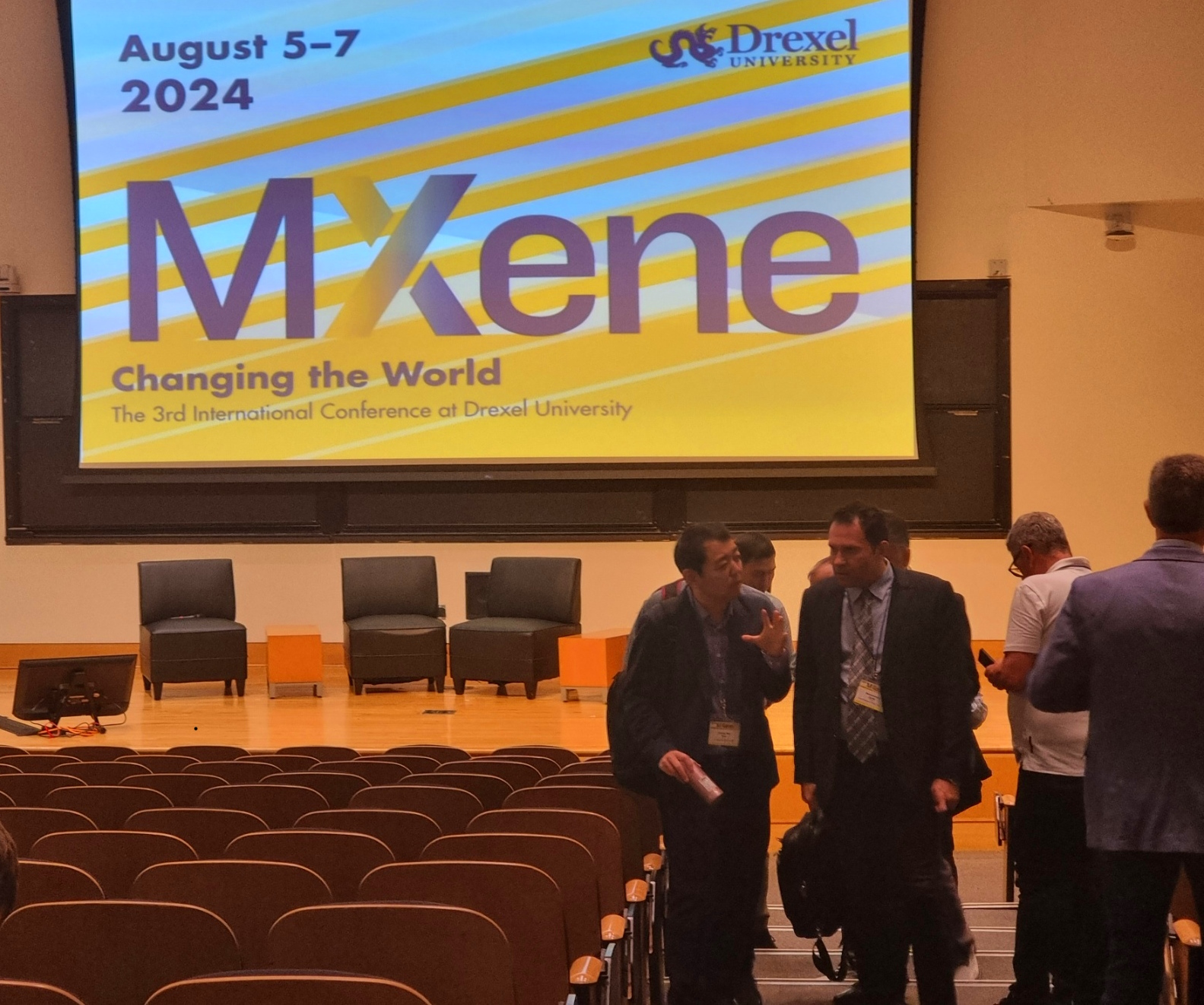 MRC and Carbon-Ukraine team visited the 3rd International MXene conference held at Drexel University on August 5-8, 2024. Conference brought together the best reserchers and leading experts on MXene field.
MRC and Carbon-Ukraine team visited the 3rd International MXene conference held at Drexel University on August 5-8, 2024. Conference brought together the best reserchers and leading experts on MXene field. 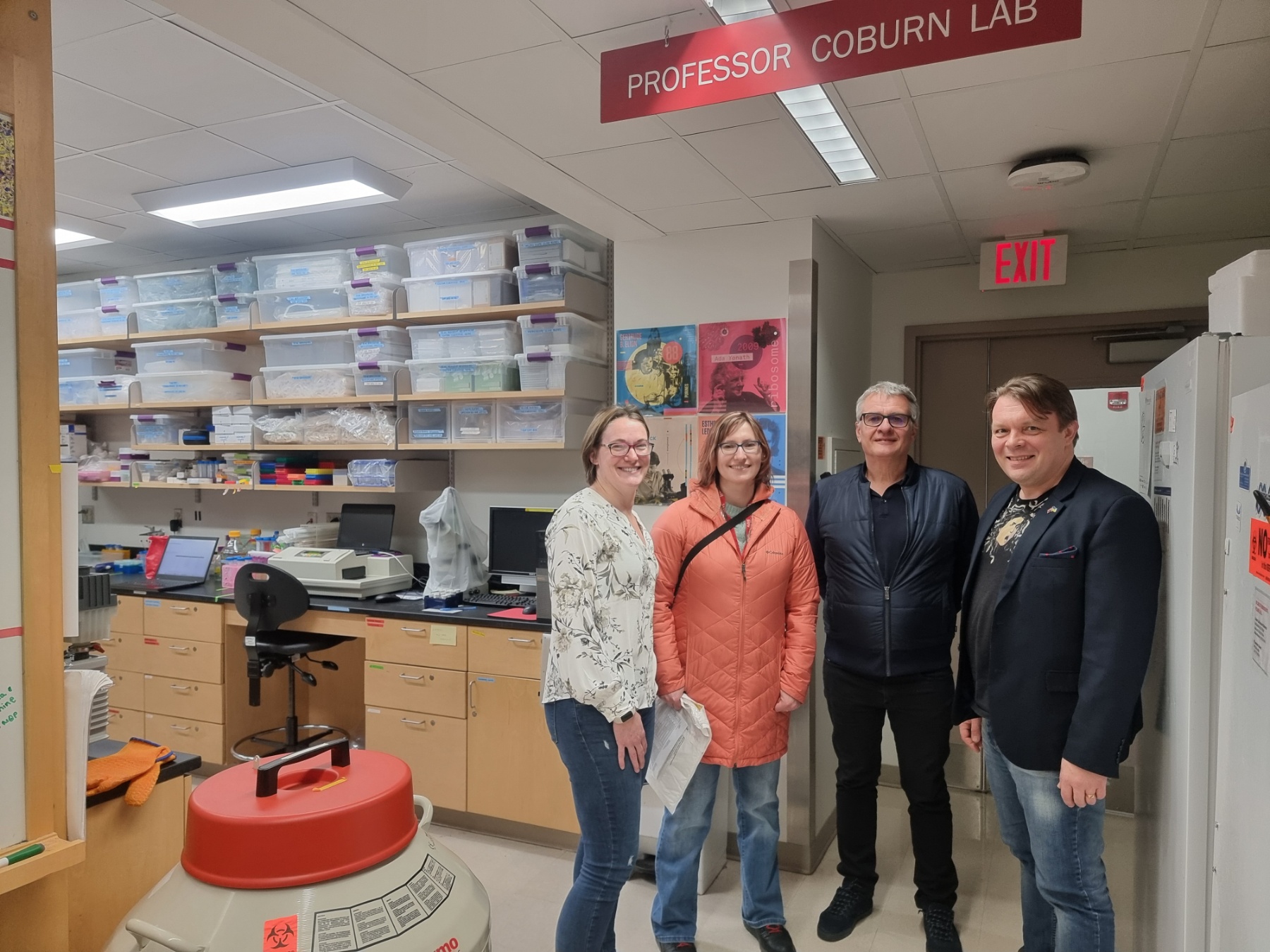
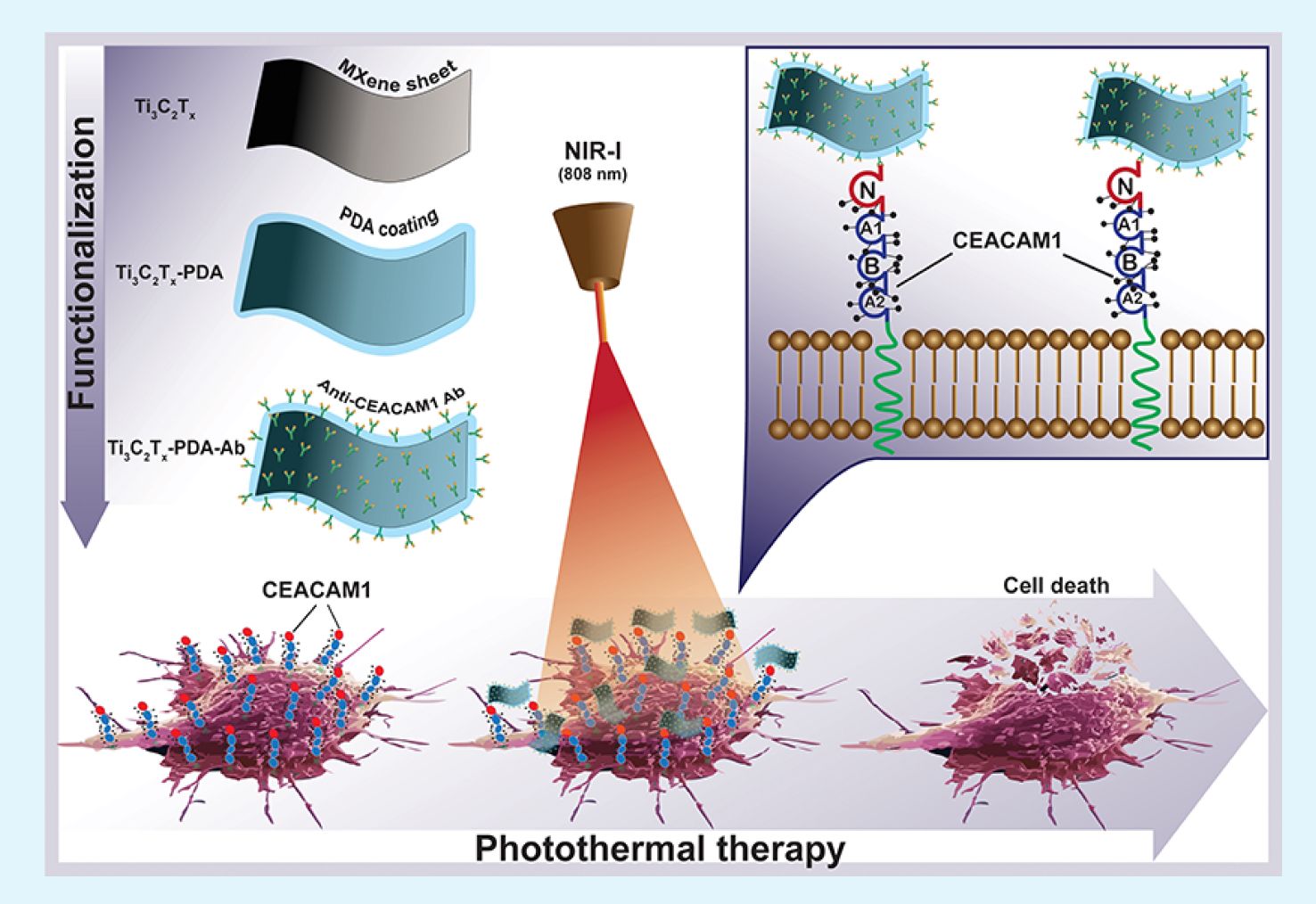 Together with colleagues from the University of Latvia, MRC/Carbone Ukraine, Adam Mickiewicz University, University Clinic Essen, and others, we have developed a novel concept involving the binding of antibodies to MXenes. In our research, we utilized anti-CEACAM1 antibodies to develop targeted photo-thermal therapy for melanoma (in vitro), paving the way for future in vivo studies and clinical trials. For the first time, we demonstrate the feasibility of delivering MXenes specifically targeted to melanoma cells, enabling the effective ablation of cancer cells under near-infrared (NIR) light. This new technique opens up vast potential for the application of MXenes in cancer treatment, diagnostics, drug delivery, and many other medical purposes.
Together with colleagues from the University of Latvia, MRC/Carbone Ukraine, Adam Mickiewicz University, University Clinic Essen, and others, we have developed a novel concept involving the binding of antibodies to MXenes. In our research, we utilized anti-CEACAM1 antibodies to develop targeted photo-thermal therapy for melanoma (in vitro), paving the way for future in vivo studies and clinical trials. For the first time, we demonstrate the feasibility of delivering MXenes specifically targeted to melanoma cells, enabling the effective ablation of cancer cells under near-infrared (NIR) light. This new technique opens up vast potential for the application of MXenes in cancer treatment, diagnostics, drug delivery, and many other medical purposes.